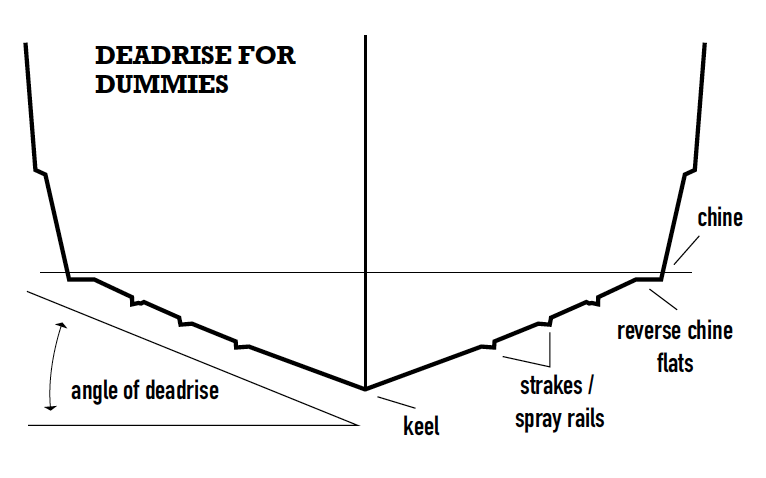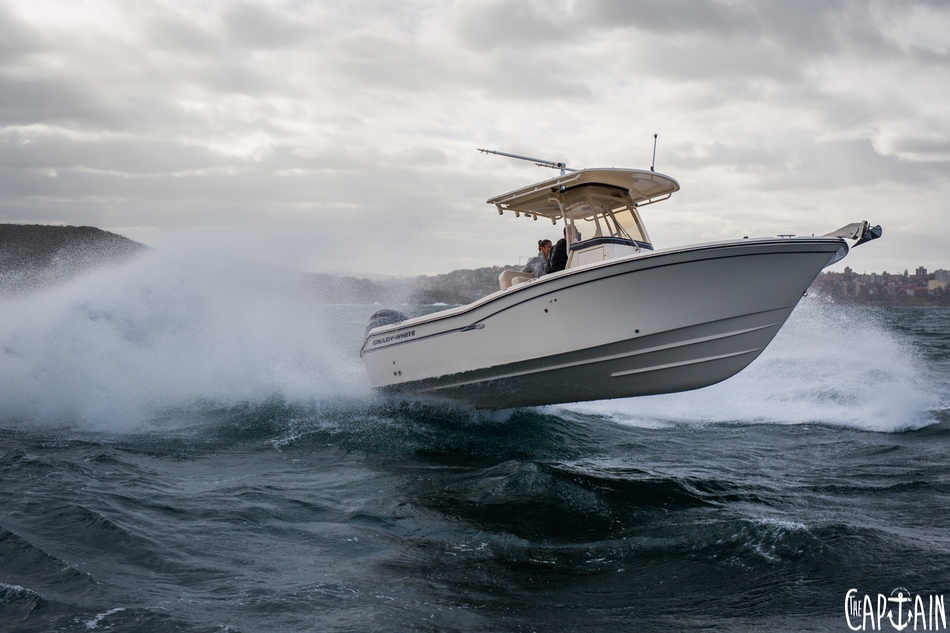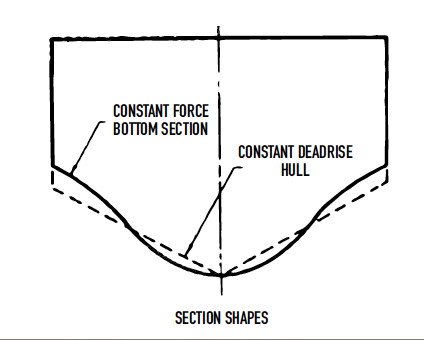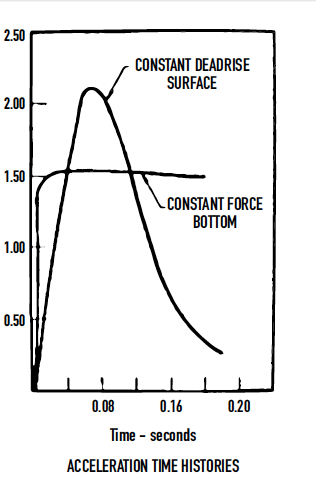Qualified American captain Eric Sorensen explains the finer points of DEADRISE.
There are several concepts that explain why some hulls ride better than others in rough seas. Deadrise is one of them. The more deadrise there is, the smoother the ride. It’s simple physics based on the distribution of energy over time when the hull impacts a wave. When landing on a wave, a deep vee absorbs the energy incrementally, decelerating slightly slower than a flat-bottomed hull, which meets the wave all at once — wham!
NOT THE WHOLE ENCHILADA
Large angles of deadrise allow a hull to slice through a wave, but it comes at the expense of dynamic lift, speed, propulsion efficiency and stability. It’s also possible for a boat with 16 degrees of transom deadrise to ride much better than a boat with 22 degrees at the transom if the deadrise further forward is greater. Deadrise in the bow and amidships is important to ride quality because this is where the hull first meets the waves. Lack of deadrise forward and generally below the helm area is why most tinnies — and too many fibreglass boats — ride hard in a chop.
DEEP VEES VS HIGH SPEED
A deep vee can maintain speed without pounding in sea conditions that force boats with less deadrise to back off. On the flipside, that deadrise can reduce speed because less lift is developed. The best way to regain speed is to reduce weight — ideally, without sacrificing strength. This is why modern lightweight composite materials and infusion techniques are so valuable to builders. Deep vees can also gain speed through refinements that add lift and deflect solid water and spray — such as reverse chines and spray strakes. Planks, or pads, also have the same effect.
DEADRISE IN MODERN VESSELS
As the power and speed of modern outboards and lightweight diesels increases, it makes sense that the deadrise in modern designs increases proportionally to keep slamming loads down. A sharp entry isn’t enough — the increased deadrise must continue aft to the hull’s midsection, where the wave impact occurs at higher speeds. For most offshore planing hulls, the ideal formula is about 20 degrees at the transom (deadrise also keeps the boat going straight downsea) and 28–35 degrees in the midsection. Over the years, builders such as Grady-White and Viking have steadily increased their deadrise forward as their boats have evolved from cruising at 16–20 knots in the ’70s to well over 30 knots today.
BELL SHAPE VS STRAIGHT SECTIONS
The shape of a hull (see right) has a significant impact on slamming, which is measured as vertical acceleration. Concave sections are dry, but pound a lot more. Convex sections are smoother, but wetter. The best all-round sections are straight in most cases, combining smoothness and dryness without developing negative pressures forward like convex sections can..
FIVE OF MY FAVOURITE AMERICAN DEEP VEES
1 Anything by Ray Hunt Design (Grady-White, Southport, original Bertram, Black Watch)
2 Blackfin
3 North Coast 26
4 Hunt Yachts
5 Eastbay







Recent Comments